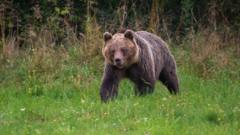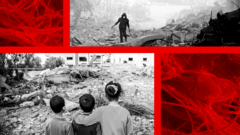Following a fatal bear attack, Slovakia’s prime minister announced a significant culling of the brown bear population, drawing criticism from wildlife advocates who argue the measure is unethical and potentially illegal.
Slovakia Extends Controversial Bear Cull Following Fatal Attack

Slovakia Extends Controversial Bear Cull Following Fatal Attack
The Slovak government has approved the killing of 350 brown bears, raising alarms among conservationists after a man was mauled to death in Central Slovakia.
In a move that has sparked significant debate, Slovakia's cabinet has authorized an extensive plan to cull 350 out of approximately 1,300 brown bears in a bid to enhance public safety after the recent death of a man in Central Slovakia. Prime Minister Robert Fico’s administration extended a state of emergency, now incorporating 55 of the nation's 79 districts to address a rising number of bear-related incidents. “We can't live in a country where people are afraid to go into the woods," stated Fico during a press conference post-cabinet meeting.
Despite measures already being taken to lower the bear population—including the shooting of 93 bears by late 2024 after loosening legal protections—environmentalists have condemned this further culling strategy. Michal Wiezek, an ecologist and member of the opposition Progressive Slovakia party, criticized the government's actions as “absurd” and a maneuver to divert attention from their failures in managing human-bear interactions. He emphasized that many bear encounters occur without incident, urging the European Commission to intervene.
The fate of the 59-year-old man, who was reported missing and found dead with severe injuries in the forest near Detva, confirmed the danger posed by these animals. Authorities have since linked his demise to a bear attack and indicated the presence of a bear's den in the vicinity. This incident follows a series of alarming events involving bears in Slovakia, including the death of a 31-year-old woman earlier this year and a notable sighting of a bear roaming in daylight through a populated town.
The Environment Minister, Tomas Taraba, has asserted that the bear population is on the rise, suggesting that maintaining around 800 bears would be sufficient. However, wildlife experts indicate that the population has stabilized around 1,270 individuals. As these discussions unfold, the future of bear conservation and management remains a contentious issue in the Carpathian region, where brown bears exist across several countries, including those bordering Slovakia.























